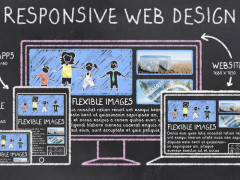An ever-growing mobile audience is challenging the mechanisms needed for marketers to interact with the audience’s fluid movement. Desktop Marketing finds itself struggling to keep up with the quick pace and instantaneous engagement on mobile devices. Despite the statistic that desktop still accounts for 42% of internet time. Web push notifications, also known as browser push notifications, are a new channel of marketing that brings the personalization of the mobile medium to the desktop.
Web push notifications are pop-up messages from a website that, when clicked, send the user to a specific link (for example, a new blog post). They’re not the same thing as web notifications, which are active only on an open web page. Instead, web push acts much like mobile application notifications, which are initiated only when the user gives permission to receive them. After the user gives permission, the company can send push notifications at any time, even if the website isn’t open in the browser.
A clean example of this is when a newspaper can notify its readers about the content of the most recently posted story. This immediate interaction helps to provide additional context to the story at hand.
Unlike the more common medium of email marketing, web push allows websites to engage users without having their contact information. Users are more likely to opt-in to the push notifications because they’re generally less invasive and make it easier to unsubscribe. Research has shown that less than 10% of users who opt-in for web push notifications unsubscribe within a year. This is despite the ease of opting out.
These are not the only benefits to using web push notifications:
- Web push notifications deliver immediately to users, eliminating the possibility of being sent to a spam folder, like email.
- Web push notifications have conversion rates 30 times that of email.
- Push notifications are less content-heavy (generally between 40-120 characters) and better appeal to the shortened attention span of the consumer audience.
- Web push offers the benefit of mobile app push notifications without investing money in developing an app.
Web push is supported by Safari 7.0.3, Chrome 42, and Mozilla Firefox. The channel continues to grow, pushing email marketing to the wayside and offering companies a more direct and concise avenue of communication with consumers. While there is yet to be much research on the direct success rate of websites using web push notifications, it is expected that it will be close to that of push notifications in mobile apps, which boost engagement by a notable 88%.
Web push notifications allow for a low-profile and noninvasive way to communicate with customers. Its low cost makes it a great investment for small and medium-sized businesses, so we can expect it to be on the uprise within the coming years.





Leave a Reply